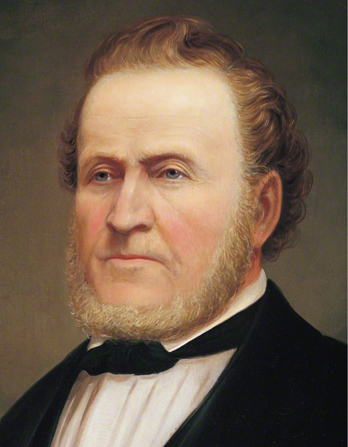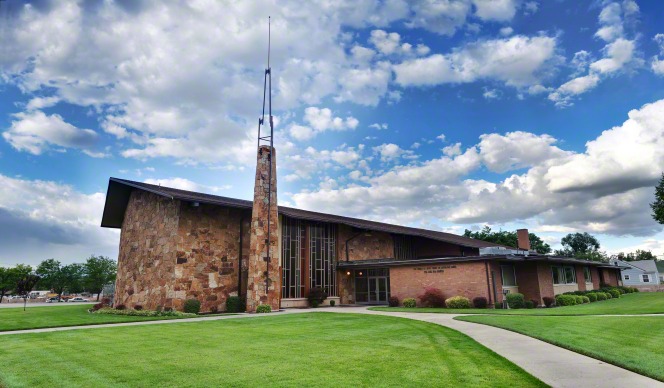This series is part of our Questions and Insight section. We welcome guest submissions for this ongoing series. If you would like to submit a post, or if you have a question about whether something is culture, policy, or doctrine and would like us to discuss, please visit our Contact or Submit page.
 In the aftermath of the presidential elections of the United States of America, the movements of activists such as the “Wear Pants to Church Day” and various letter writing campaigns, the change in minimum age requirements for missionary service, and jokes about green jello with carrots, I thought it would be the perfect time to address the tendency we have in the Church to confuse culture, policy, and doctrine.
In the aftermath of the presidential elections of the United States of America, the movements of activists such as the “Wear Pants to Church Day” and various letter writing campaigns, the change in minimum age requirements for missionary service, and jokes about green jello with carrots, I thought it would be the perfect time to address the tendency we have in the Church to confuse culture, policy, and doctrine.
A religion professor I had once at BYU for a Doctrine and Covenants class drew a triangle on the white board like the one in the image above. The idea she presented was that the doctrine of the gospel of Jesus Christ is quite limited, and comes from one source – Jesus Christ. The policies are much more broad and include more than the doctrine, although policy is based on doctrine. Culture is influenced by policy and doctrine, but also frequently goes farther outside the lines of policy and doctrine, sometimes originating from who knows where.
The Doctrines of the Gospel
Christ explained His doctrine to the Nephites after His resurrection,
This is my doctrine, and it is the doctrine which the Father hath given unto me; and I bear record of the Father, and the Father beareth record of me, and the Holy Ghost beareth record of the Father and me; and I bear record that the Father commandeth all men, everywhere, to repent and believe in me.
And whoso believeth in me, and is baptized, the same shall be saved; and they are they who shall inherit the kingdom of God.
And whoso believeth not in me, and is not baptized, shall be damned.
… And whoso believeth in me believeth in the Father also; and unto him will the Father bear record of me, for he will visit him with fire and with the Holy Ghost. …
Verily, verily, I say unto you, that this is my doctrine, and whoso buildeth upon this buildeth upon my rock, and the gates of hell shall not prevail against them
The doctrine is basically the plan of salvation. Every principle of the gospel fits perfectly into the plan. The doctrine does not specifically dictate every action or thought. In April 2012, Elder D. Todd Christofferson taught us about the doctrine of Christ and explained that “this doctrine is pure, it is clear, it is easy to understand—even for a child.”
The prophet Joseph Smith taught,
The fundamental principles of our religion are the testimony of the Apostles and Prophets, concerning Jesus Christ, that He died, was buried, and rose again the third day, and ascended into heaven; and all other things which pertain to our religion are only appendages to it.
Elder Christofferson also taught us how doctrine is received in the Church. He discussed prophets, seers, and revelators, and reminded us of the ninth article of faith, which says, “we believe [God] will yet reveal many great and important things pertaining to the kingdom of God.” That revelation is received through prophets, seers, and revelators in the appointed way that Christ has organized His Church on this earth.
This clarification, which is probably my favorite quote from that entire session of conference, was offered in Elder Christofferson’s talk,
At the same time it should be remembered that not every statement made by a Church leader, past or present, necessarily constitutes doctrine. It is commonly understood in the Church that a statement made by one leader on a single occasion often represents a personal, though well-considered, opinion, not meant to be official or binding for the whole Church.

We must be careful not to assume something is doctrine just because it came out of the mouth of a Church leader. Elder Christofferson went on to relate a story about Brigham Young, who after giving a riling sermon about defiance to the army the government was sending, later spoke again and “said that Brigham Young had been talking in the morning, but the Lord was going to talk now. He then delivered an address, the tempo of which was the opposite from the morning talk.” Thus, a prophet is a prophet only when he is speaking as such. We can receive personal spiritual confirmation of the inspired nature of a statement from our Church leaders, and need not wonder if something was or was not a doctrinal statement. But we have to do some work to figure it out for ourselves.
Actual doctrine never changes. God does not change. However, we may not be fully able to receive all of the doctrine that God has for us, or we might not always understand the doctrine that we have. When Christ restored His Church in this dispensation through the prophet Joseph Smith, He did not give Joseph everything all at once. The doctrine of the priesthood, the doctrine of eternal marriage, the doctrine of proxy baptism and other temple work did not come until later. Doctrine was given “line upon line.”
Policy and Inspiration
The Church of Jesus Christ of Latter-day Saints is not the gospel. Elder Donald L. Hallstrom pointed that out in his General Conference address in the same conference as Elder Christofferson’s talk. He said,
Sometimes we use the terms gospel and Church interchangeably, but they are not the same. They are, however, exquisitely interconnected, and we need both.
Elder Hallstrom’s subsequent description of the gospel, or doctrine, of Jesus Christ reads similarly to the scripture quoted from 3 Nephi. He more or less described the plan of salvation, including our premortal existence, the atonement, and eternal families. But Elder Hallstrom reminded us that “the purpose of the Church is to help us live the gospel.” In my diagram above, I would say that the gospel of Jesus Christ lies squarely in the doctrine section of the triangle. The Church fits more into policy, although as Elder Hallstrom pointed out, the Church and the gospel, or I would say the policy and the doctrine, are “exquisitely interconnected, and we need both.”
 Church policy is based on doctrine, or on an understanding of doctrine. However, the policies are not necessarily doctrine – they can change, based on revelation and inspiration – but Church policies are supposed to help us live the doctrines of the gospel of Jesus Christ. Elder Hallstrom said,
Church policy is based on doctrine, or on an understanding of doctrine. However, the policies are not necessarily doctrine – they can change, based on revelation and inspiration – but Church policies are supposed to help us live the doctrines of the gospel of Jesus Christ. Elder Hallstrom said,
Some have come to think of activity in the Church as the ultimate goal. Therein lies a danger. It is possible to be active in the Church and less active in the gospel. Let me stress: activity in the Church is a highly desirable goal; however, it is insufficient. Activity in the Church is an outward indication of our spiritual desire.
The purpose of the Church is to bring us closer to Christ, through His gospel and doctrine. In fact, in the Church Handbook of Instructions states that “The Church provides the organization and means for teaching the gospel of Jesus Christ to all of God’s children. It provides the priesthood authority to administer the ordinances of salvation and exaltation to all who are worthy and willing to accept them.”
An Inspired Culture… Mostly
Just like the policies of the Church are based on doctrine, so, mostly, is the culture of our Church based on policy and doctrine. But that is not always the case. Even when a good part of our culture is based on policy and doctrine it is always helpful to remember that it is not doctrine.
When we get so distracted trying to fit in to the culture of the Church, and trying to be active in the Church, we miss what is really important, and that is the gospel, the  doctrine, up at the tip of the triangle – the plan of salvation – and really nothing more, since “all other things … are only appendages to it.”
doctrine, up at the tip of the triangle – the plan of salvation – and really nothing more, since “all other things … are only appendages to it.”
The culture can definitely be a good thing, as it is often the first experience someone has in being exposed to the Church. They notice that their neighbors are always friendly, bringing over treats, helping out without any thought of reciprocation. Then they find out about the compassionate service committee, the Relief Society, and Priesthood Quorums. Then, if they start to study the Book of Mormon and learn about the gospel, they learn about the gospel principles of charity and service.
James recently wrote a post about contributing positively to Mormon culture. One of our readers commented that Mormon culture is fluid, changing wherever you are in the world, that is, the Mormon culture of a stake in Brazil is going to be different from the Mormon culture of a stake in Ohio, and that will be different from the Mormon culture of a stake in Utah. With this much variation, you can know that the culture is definitely not doctrine. Even the policies change sometimes in different parts of the world, because the needs of the members of the Church are different. But the doctrine of the gospel is the same no matter where you go.
So it is with these thoughts in mind that we begin our Separating Doctrine from Culture series. This will be an ongoing series, and open to questions or guest posts.
If you have a question about something – if you want to discuss whether something is culture, policy, or doctrine – submit your question using the link in our header on the home page. If you would like to write a post about a cultural aspect of the Church – especially if you live outside of the “Mormon Corridor” (Utah, Idaho, Arizona, Southern California, and parts of Nevada, Colorado, Wyoming, Montana, Southern Alberta, and even Juarez, Mexico) and especially if you live outside of the United States of America – please consider writing a post. We would love to get a more global look at our global Church.
- What aspects of Church culture where you live do you think accurately represent doctrine?
- How do you influence the Church culture where you live?
- How do you separate culture and doctrine?
- How do you know if something is doctrine, policy, or culture?
Continue reading at the original source →




